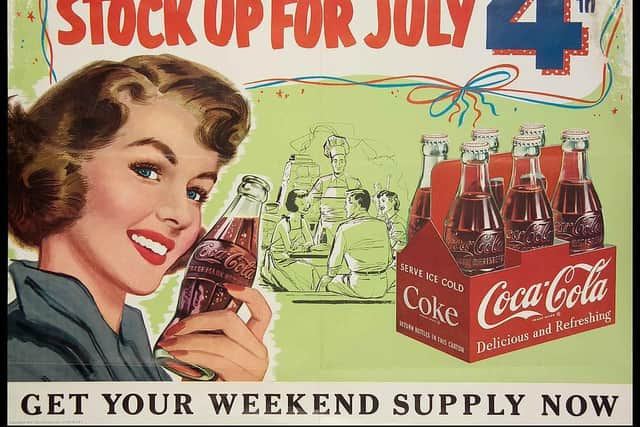Antiques: The fascinating history of Coca Cola
and live on Freeview channel 276
In fact I enjoyed it so much I had a dry February as well. The following year, because so many people were ‘drying out’ in January, I stayed wet, well moist is probably a better description. This year I am faced with a dilemma, as our Christmas guest list runs well into mid January, would becoming ‘dry’ on New Year’s Day be anti-social. I have decided it would, but just in case I change my mind I am going to stock up on Coca-Cola.
The phenomenon known as Coca-Cola was invented in 1886 by said pharmacist John Pemberton as a simple experiment of curiosity and started life sold by the glass in the Jacobs Pharmacy in Atlanta where he worked. The name comes from the ingredients originally used to make the drink; coca leaves and kola nuts. Frank Robinson, the Pemberton’s bookkeeper was actually the one who created both the name and the very distinctive Coca-Cola logo, which was in fact simply his own handwriting. He was also responsible for publicising the drink as a medicinal ‘pick me up’. Coca leaves, which were also used to make the drug cocaine, were eventually replaced in the early 1920s by caffeine.
Advertisement
Hide AdAdvertisement
Hide AdCoca-Cola was first officially advertised in a magazine in 1902 and other merchandise quickly followed such as glasses and trays. The Coca-Cola image changed slightly during the 1920s and 1930s, alongside the ingredients, to become more family-inclusive, focusing on group enjoyment.


The most well-known product of this, of course, is the famous Santa Claus images. The Winter Wonderland Santa Claus was developed by Swedish artist, Haddon Sundblom in the early 1930s to match the patented red of the Coca-Cola cans and is still an image synonymous with the Coca-Cola we love today.
The value of most Coca-Cola advertising is calculated the same as most collectables; rarity and condition are generally most important and realise the highest prices. Items from the late 1880s and 1890s, before official advertising from the company, are difficult to find these days making them highly sought after as are unusual items such as artwork with images of men, instead of the traditional smiling ladies.